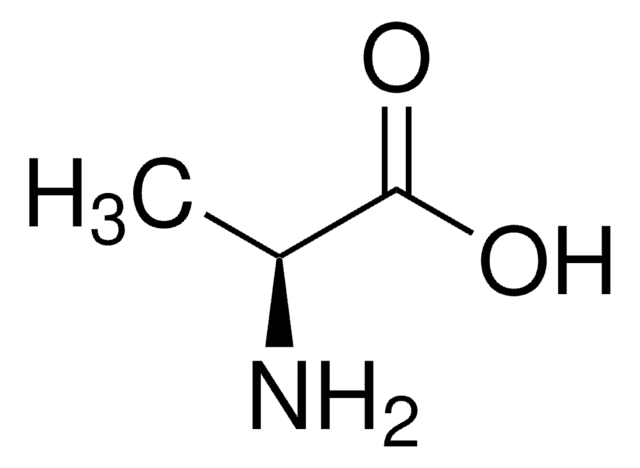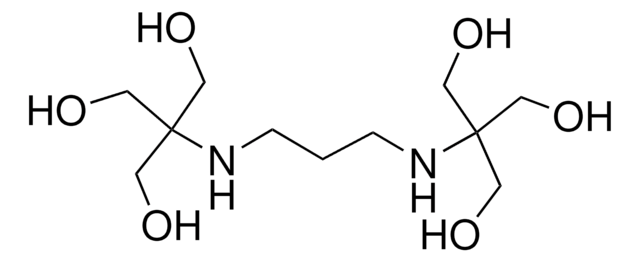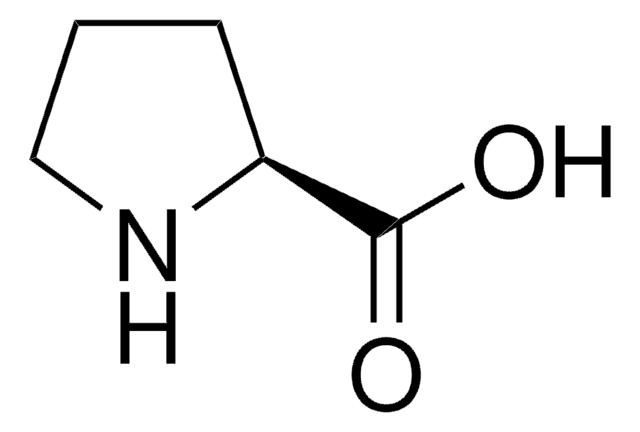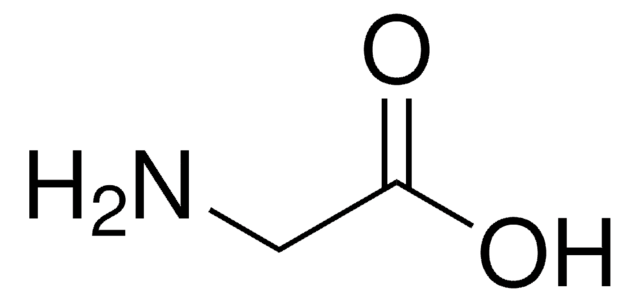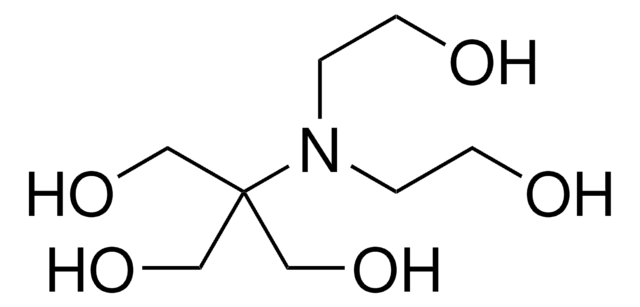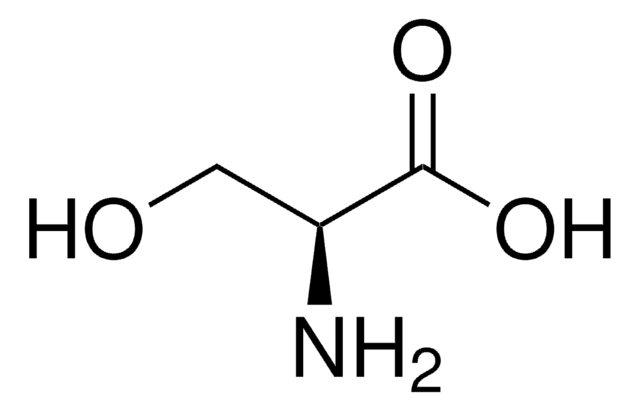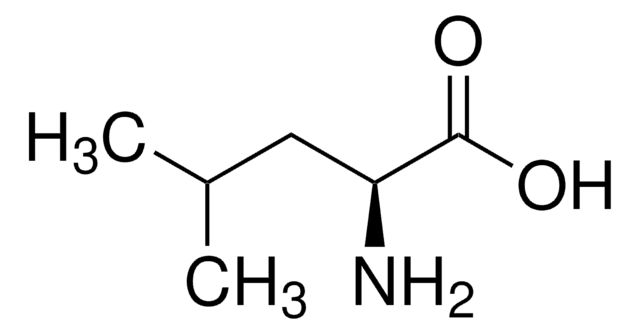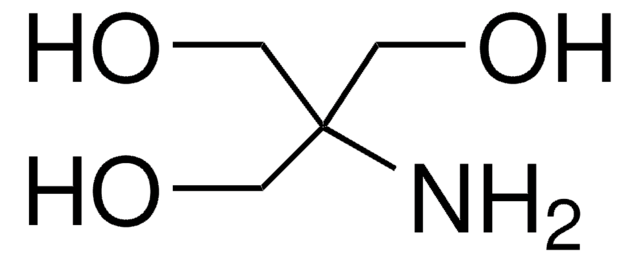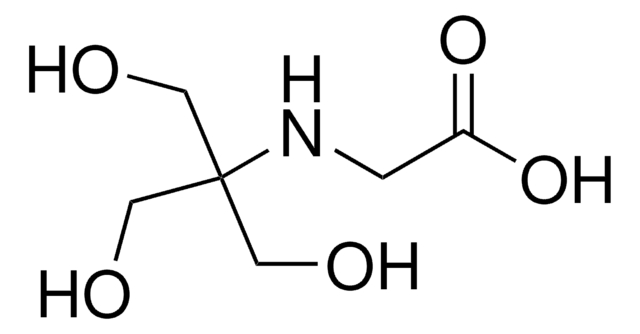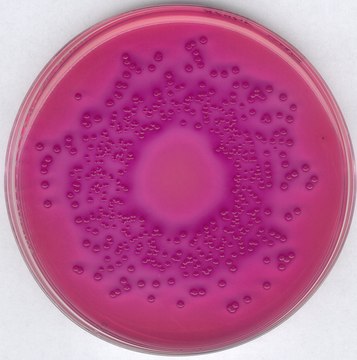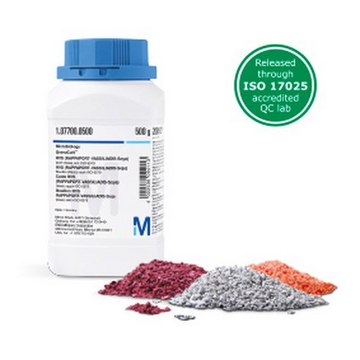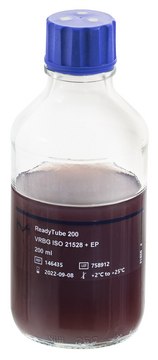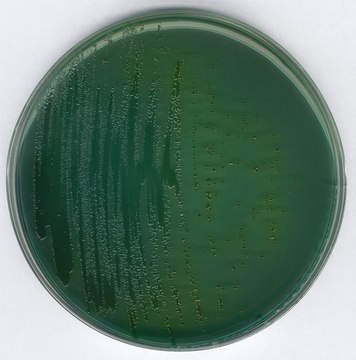B9754
BIS-TRIS
≥98.0% (titration)
Synonym(s):
2,2-Bis(hydroxymethyl)-2,2′,2″-nitrilotriethanol, 2-Bis(2-hydroxyethyl)amino-2-(hydroxymethyl)-1,3-propanediol, Bis(2-hydroxyethyl)amino-tris(hydroxymethyl)methane
Select a Size
About This Item
Recommended Products
Assay
≥98.0% (titration)
form
crystalline powder
storage condition
dry at room temperature
technique(s)
UV/Vis spectroscopy: suitable
electrophoresis: suitable
color
white
useful pH range
5.8-7.2
pKa (25 °C)
6.5
solubility
H2O: 500 mg/mL, clear, colorless to very faintly yellow
suitability
suitable for Western blot
suitable for column chromatography of proteins
application(s)
diagnostic assay manufacturing
general analytical
microbiology
Looking for similar products? Visit Product Comparison Guide
Related Categories
1 of 4
This Item | 101406 | 146435 | 103854 |
|---|---|---|---|
| suitability enterobacteriaceae | suitability coliforms | suitability enterobacteriaceae | suitability selective and differential for Vibrio spp. |
| technique(s) microbiological culture: suitable | technique(s) microbiological culture: suitable | technique(s) - | technique(s) microbiological culture: suitable |
| form medium granules (dehydrated (DCM)) | form medium granules (dehydrated (DCM)) | form - | form powder |
| application(s) food and beverages | application(s) food and beverages | application(s) food and beverages | application(s) food and beverages |
| pH 7.3 (37 °C, 40 g/L in H2O, after autoclaving) | pH 7.3-7.5 (37 °C, 40 g/L in H2O, after autoclaving) | pH 7.6 ( in H2O) | pH 8.6±0.2 (25 °C) |
General description
Application
Features and Benefits
- Suitable for Biological and Biochemical Research
- Effective Buffering from pH 5.8-7.2 (25 °C) with a pKa of 6.5 (25 °C)
Other Notes
Signal Word
Warning
Hazard Statements
Precautionary Statements
Hazard Classifications
Eye Irrit. 2
Storage Class Code
11 - Combustible Solids
WGK
WGK 1
Flash Point(F)
Not applicable
Flash Point(C)
Not applicable
Personal Protective Equipment
Choose from one of the most recent versions:
Certificates of Analysis (COA)
Don't see the Right Version?
If you require a particular version, you can look up a specific certificate by the Lot or Batch number.
Already Own This Product?
Find documentation for the products that you have recently purchased in the Document Library.
Protocols
To measure glucose-6-phosphatase activity, the Taussky-Shorr method is used. This method is a spectrophotometric stop-rate determination assay that is measured at 660 nm.
Our team of scientists has experience in all areas of research including Life Science, Material Science, Chemical Synthesis, Chromatography, Analytical and many others.
Contact Technical Service